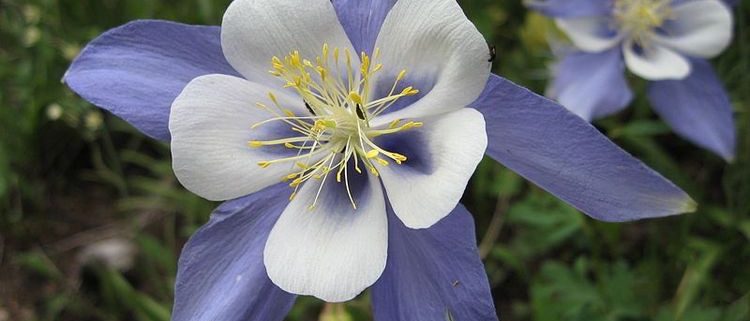Plants That Thrive in Hot, Arid Climates (Welcome to Colorado!)
Water is a precious resource, we all know that for a fact. In Colorado, you will typically see either long periods of dryness, or downpour after downpour.
If you’re used to some of the more delicate flower breeds like petunias, you will likely be in for a surprise when you find out that no matter the amount of sprinkling, watering and raining, your gorgeous flowers have shriveled up to the point of no return.
Let’s avoid that for you this year (or if you are new or planning to move to Denver soon), and go over how to garden in Colorado. Which plants will endure?
There are many plants that thrive from little to no water and come up every year, leaving you with little to do each summer but enjoy the fruits of your labor (from last year!).
Here is a comprehensive list of some of our favorite Colorado-loving perennials and a little about each one to make your garden a success this year:
-
Dianthus
Dianthus flowers are fragrant and come in several color varieties including pink, red and white. They have notched petals and are beautiful for cutting and arranging in a vase. They are even deer resistant.
The best time to plant Dianthus is in the Spring or Fall about 6 – 12 inches apart. After the first frost, cut the stems to about 1 – 2 inches above ground. Stake the stems when they first begin to grow as these can be very tall plants.
Dianthus multiply easily, so every 3 – 4 years, you can take the plants, divide them up and replant them for even more coverage.
-
Rocky Mountain Penstemon
This plant is a relative of the evergreen and appears as a small bush with purple flowers. It grows best in drained soil (think: dry) and can handle high altitudes and plenty of direct, brutal sun.
Rocky Mountain Penstemons also attract bumblebees, making your garden an attractive spot for them to pollinate and maintain an insect ecosystem, which is great for the environment and creates a safe haven for them.
The purple flowers are exquisite. Tall and straights, they bloom consistently and add height to your landscaping. They are also native to the region, providing a stable and natural addition to the area’s flora.
-
Liatris
Liatris varieties are one of the easiest plants to grow in the Colorado area. They are able to withstand the blazing sun without much water, for long periods of time.
They are a prairie wildflower that grows somewhat in the shape of a small bush with leaves and greens at the bottom and pinkish/purple “paintbrush” appearing blooms.
Liatris can grow from 1 – 5 feet tall depending on how close they are to other plants or obstructions and how much (or too much) nutrients they receive, so to get to their full growth, plant your seeds a bit further apart, at about 12 – 15 inches.
-
Rocky Mountain Columbine
It’s not surprising that the Colorado State Flower, the Rocky Mountain Columbine, would make this list. It has been a favorite of Colorado residents for over a century, voted into “statehood recognition status” in 1891 by local school children.
While most plants on this list can grow in full sun in arid conditions, the Columbine is just slightly more delicate and should be planted in partial shade. They are a hardy perennial, however, so they can withstand more sun and less water than the average flower.
Fertilization is a good idea for Columbines and can help them be most vibrant. And, make sure you do not overwater as they thrive in well-drained soil.
Columbines are resistant to insects and diseases and will grow all season long, making them a perfect staple to your Colorado garden.
-
Poppy Mallow
Poppies are beautiful plants that come in a variety of colors, including the most well-known orange colored variety. In Colorado, you will find orange and a magenta variety, among others with speciality growers and seasoned landscapers.
Poppy Mallows (and poppies in general) require a different method of planting than many other flower varieties. The best time to plant the seeds is in the fall, or even in the winter. Winter? Yes. Poppies need a period of “stratification” or “period of exposure to cold” before they will germinate. Make sure you plant in bright, bright sun as they absolutely love it.
They do have a short bloom season, so these are often planted with other annuals and perennials for variety in color once the poppy blooms have faded. They are a great accent and do very well in Colorado climates, coming back year after year to make your garden the envy of your new neighborhood.
Want more? Check out these local resources.
Now that you know to avoid the tempting displays at the local shopping centers, make sure to check out a local gardener for these and many more Colorado-happy varieties of plants. A great idea is to create a Pinterest board of the flowers that do well here and bring your phone to the market. Show the pictures and names and get the info you need from experienced “bloomers.”
Another way is to check out this guide from 5280 (one of our local Denver magazines). It goes into not only the perennial flowers mentioned here, but also great annuals that do well, vegetables that will make it, and herbs that will season your dishes and grow naturally well in our local conditions.
And, if that’s not enough, geek out on Plant Select’s comprehensive “e-guide” here that breaks it all down for you.
Ready to start planting the seeds in your Colorado move?
Contact us here to get sent free listings exactly in your price range, neighborhood, style and size. It’s so easy and better than browsing because these days, you can’t really trust what’s online commercially, but you can trust the National Association of Realtors, which has the only truly up-to-date listings in the area. The Association stands behind honesty and accountability in real estate and it’s the only system we us. Just click here to send us a note on what you’re looking for and we’ll get you all set up.








